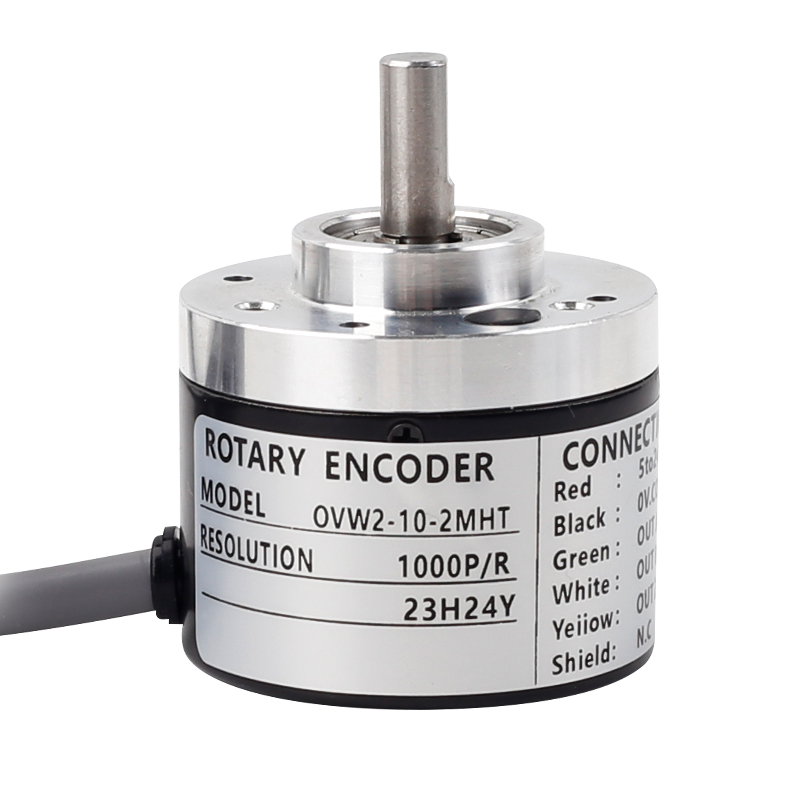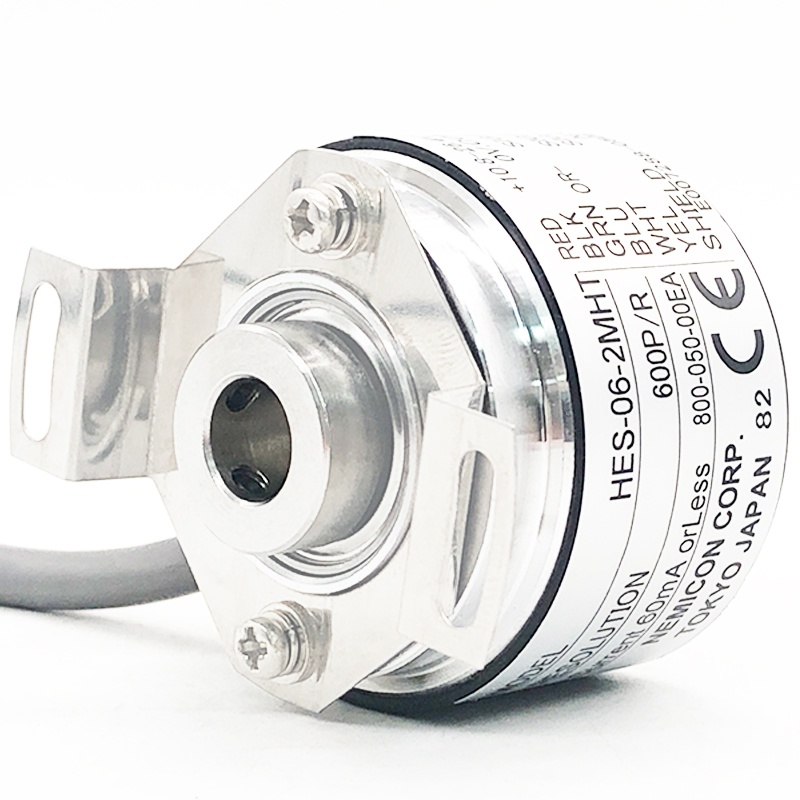Encoder is a sensor device that provides precise position feedback. Its working principle is based on photoelectric conversion technology. Through its internal optical system, the encoder converts mechanical displacement into electrical signal output, thereby enabling precise measurement of angle, speed, and position. This device typically consists of a code disc, light source, photosensitive element, and signal processing circuit. The density of the lines on the code disc directly affects the resolution of the encoder.
In the field of industrial automation, high-precision encoders are widely used in robot joint control to ensure the accuracy of mechanical arm movement trajectories. At the same time, in CNC machine tools, they are used to monitor tool positions in real time, improving machining accuracy. Encoders are also commonly used in elevator systems to ensure smooth operation and safety.
Beyond industrial applications, high-precision encoders are equally suitable for the aerospace industry, such as in satellite attitude control systems that require extremely high-precision position detection. In medical equipment, encoders assist in performing complex imaging tasks in CT scanners and MRI machines. They are also found in high-end consumer electronics, such as the navigation modules of drones, to enhance flight stability.
How to choose the right high-precision encoder
When choosing the right high-precision encoder, it is important to consider the encoder's resolution. Resolution refers to the smallest position change that the encoder can detect, and is typically expressed in pulses per revolution (P/R). For applications requiring high-precision measurement, selecting an encoder with high resolution is critical.
Consider the type of output signal from the encoder. Common output signals include analogue signals (such as voltage or current) and digital signals (such as pulses or SSI). Digital signals are generally more stable, have stronger interference resistance, and are suitable for long-distance transmission.
Furthermore, the response speed of the encoder is also an important factor. The response speed determines how quickly the encoder can respond to position changes, which is particularly important for dynamic measurements and high-speed applications.
Environmental factors should not be overlooked. Whether the encoder needs to operate in harsh environments such as high temperatures, low temperatures, humidity, or vibration will affect the choice of material and protection rating for the encoder.
Consider the encoder's interface and compatibility. Ensure that the encoder is compatible with existing control systems or equipment to reduce additional adaptation costs and complexity.
The Importance of High-Precision Encoders in Automated Control Systems
High-precision encoders play a crucial role in automated control systems. They are key components for achieving precise position control and speed measurement. In automated control systems, encoders provide accurate feedback information about the position and motion status of mechanical components, which is essential for ensuring precise machine operation and improving production efficiency.
Encoders means they can detect even the slightest position changes, which is indispensable for automated processes requiring fine adjustments. In fields such as robotics, precision machining, and medical equipment, the precision of encoders directly impacts the quality of the final product.
Encoders also help improve system reliability and stability. By providing accurate feedback, encoders can assist control systems in detecting and correcting potential errors, thereby reducing machine failures and downtime. This is crucial for maintaining continuous production line operation and improving overall production efficiency.
As technology advances, high-precision encoders are also evolving to meet higher performance demands. They are often combined with advanced sensor technology and data processing algorithms to achieve more precise control and monitoring. Therefore, the importance of high-precision encoders in automated control systems is self-evident; they form the foundation for modern industrial automation and smart manufacturing.


